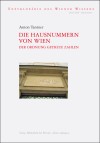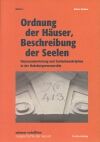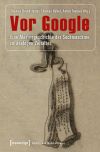Trabant und Käfer
Die aktuelle Ausgabe des History Workshop Journal (68/Autumn 2009) enthält zwei Artikel zu automobilen Antipoden:
Rieger, Bernhard: The ‘Good German’ Goes Global: the Volkswagen Beetle as an Icon in the Federal Republic, in: History Workshop Journal, 68/2009, S. 3-26, doi:10.1093/hwj/dbp010
Abstract:
Drawing on company and legal records as well as the West German press, this article employs the Volkswagen Beetle for a study of how West Germans made sense of their country and its place in the world after 1945. First, it examines how the public adopted the car as a prominent symbol of dynamic reconstruction during the Fifties and Sixties. Despite wide knowledge about its Third-Reich origins, the Volkswagen soon emerged as an icon of the new domestic order because, by advancing mass motorization, it satisfied previously unattainable consumer dreams. Moreover, its attractiveness hinged on its technical dependability, which contemporaries read as an indicator of the solidity of a postwar order built on affluence. Second, West Germans took the car’s success abroad as a signal of their country’s acceptance within an international, American-led order that assigned the Federal a secondary role. That the Volkswagen concern developed into a multinational company wielding considerable power in Latin American countries like Mexico left no imprint on the Beetle’s iconography in Germany. Interpretations of Beetle thus supported conceptions of West Germany as a small, affluent country with limited international economic power that continued to inform German debates on globalization in the new millennium.
Rubin, Eli: The Trabant: Consumption, Eigen-Sinn, and Movement, in: History Workshop Journal, 68/2009, S. 27-44, doi:10.1093/hwj/dbp016
Abstract:
This essay looks at the history of the quintessential East German automobile, the Trabant, from a unique point of view. Rather than focusing on the Trabant as an object unto itself, this essay argues that the Trabant must be understood as integrated into a larger system of socialism, and the contradictions that this system produced. In particular, the notion of Eigen-Sinn helps illuminate the paradox of the Trabant as an embedded or interwoven object. The Trabant was, from the point of view of the East German leadership and its bureaucracy, part of a larger, overarching "system of movement" (Bewegungssystem). In of itself, it was useful only as a means of moving people from origin to destination, and was only as important as its function allowed. The history of the massive housing projects built in the 1960s, 70s and 80s in East Germany as part of a utopian urban planning campaign illustrates the way in which the Trabant was folded into a broader vision of complete, holistic system integration in the ideal socialist urban space. In so doing, however, the Trabant became like many other pieces of the socialist puzzle, in that it, and its constituent parts, had to be simple, interchangeable, and easily understandable and fixable, even for its consumers in order to ensure the overall smooth functioning of the socialist system of movement, meaning that many Trabant owners could understand and repair their automobiles with a degree of expertise that few western car owners possessed or possess, and thus had a more individual relationship with their cars than many in the more individualized West.
Rieger, Bernhard: The ‘Good German’ Goes Global: the Volkswagen Beetle as an Icon in the Federal Republic, in: History Workshop Journal, 68/2009, S. 3-26, doi:10.1093/hwj/dbp010
Abstract:
Drawing on company and legal records as well as the West German press, this article employs the Volkswagen Beetle for a study of how West Germans made sense of their country and its place in the world after 1945. First, it examines how the public adopted the car as a prominent symbol of dynamic reconstruction during the Fifties and Sixties. Despite wide knowledge about its Third-Reich origins, the Volkswagen soon emerged as an icon of the new domestic order because, by advancing mass motorization, it satisfied previously unattainable consumer dreams. Moreover, its attractiveness hinged on its technical dependability, which contemporaries read as an indicator of the solidity of a postwar order built on affluence. Second, West Germans took the car’s success abroad as a signal of their country’s acceptance within an international, American-led order that assigned the Federal a secondary role. That the Volkswagen concern developed into a multinational company wielding considerable power in Latin American countries like Mexico left no imprint on the Beetle’s iconography in Germany. Interpretations of Beetle thus supported conceptions of West Germany as a small, affluent country with limited international economic power that continued to inform German debates on globalization in the new millennium.
Rubin, Eli: The Trabant: Consumption, Eigen-Sinn, and Movement, in: History Workshop Journal, 68/2009, S. 27-44, doi:10.1093/hwj/dbp016
Abstract:
This essay looks at the history of the quintessential East German automobile, the Trabant, from a unique point of view. Rather than focusing on the Trabant as an object unto itself, this essay argues that the Trabant must be understood as integrated into a larger system of socialism, and the contradictions that this system produced. In particular, the notion of Eigen-Sinn helps illuminate the paradox of the Trabant as an embedded or interwoven object. The Trabant was, from the point of view of the East German leadership and its bureaucracy, part of a larger, overarching "system of movement" (Bewegungssystem). In of itself, it was useful only as a means of moving people from origin to destination, and was only as important as its function allowed. The history of the massive housing projects built in the 1960s, 70s and 80s in East Germany as part of a utopian urban planning campaign illustrates the way in which the Trabant was folded into a broader vision of complete, holistic system integration in the ideal socialist urban space. In so doing, however, the Trabant became like many other pieces of the socialist puzzle, in that it, and its constituent parts, had to be simple, interchangeable, and easily understandable and fixable, even for its consumers in order to ensure the overall smooth functioning of the socialist system of movement, meaning that many Trabant owners could understand and repair their automobiles with a degree of expertise that few western car owners possessed or possess, and thus had a more individual relationship with their cars than many in the more individualized West.
adresscomptoir -
Alltag - Do, 24. Sep. 2009, 09:28








